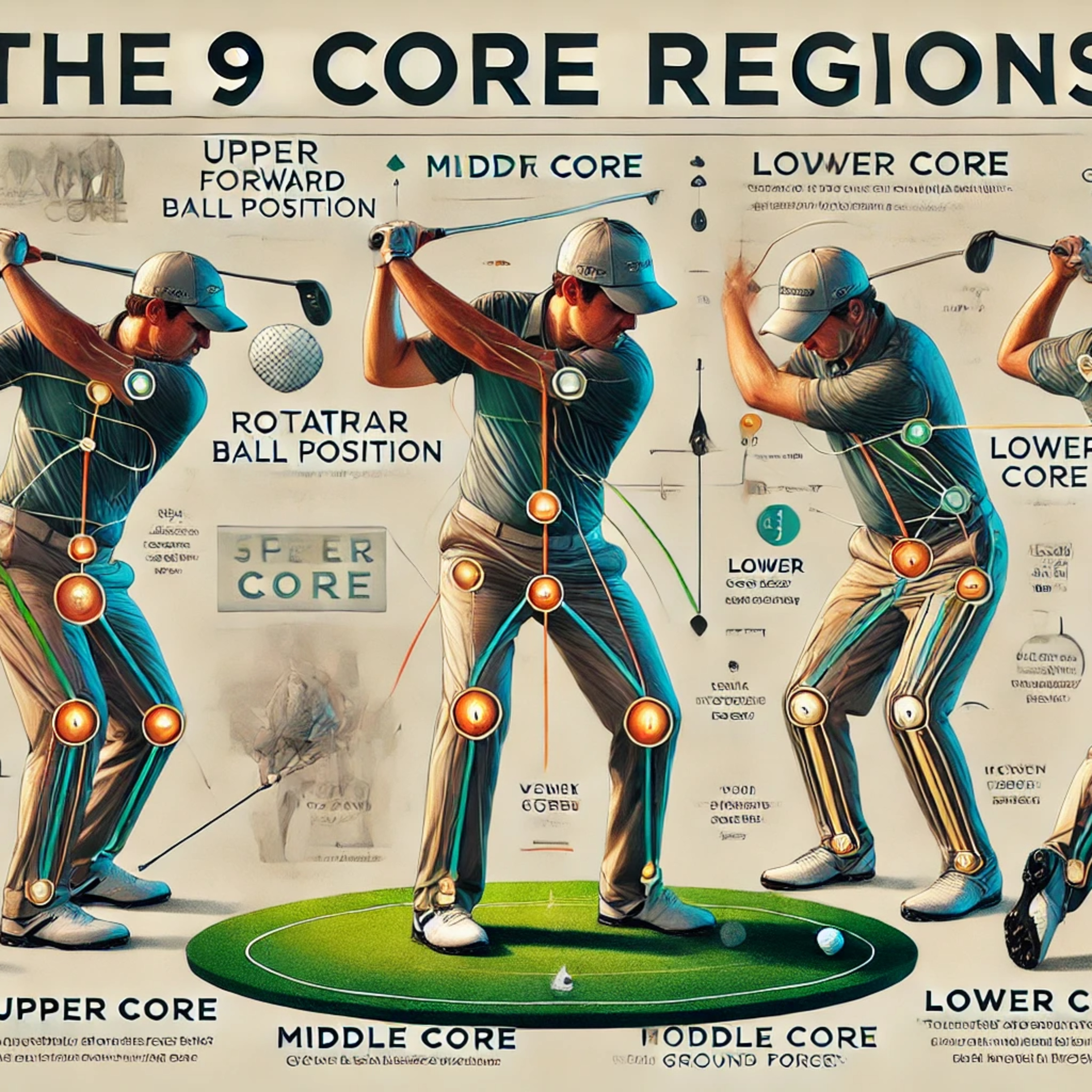#87 The Uppercore Golfer A Biomechanical Guide.
- Author
- Golf247.eu
- Published
- Fri 27 Dec 2024
- Episode Link
- https://podcasters.spotify.com/pod/show/puttin-pro/episodes/87-The-Uppercore-Golfer-A-Biomechanical-Guide-e2s368c
The Podcast "The Uppercore Golfer: A Comprehensive Guide" explores the biomechanical and technical aspects of the golf swing for Uppercore Golfers. It provides detailed analysis of the setup position, backswing, downswing, and finish, highlighting specific movement patterns and training strategies tailored for this golfer type. The focus is on optimizing individual strengths while minimizing common weaknesses. Practical drills and the use of modern analysis tools are also recommended to aid improvement.
Biomechanical Characteristics of the Uppercore Golfer
The biomechanical movement patterns of Uppercore Golfers differ significantly from other golfer types. These distinctions, particularly regarding positioning, backswing, downswing, and finish, are analyzed in depth.
1. Setup Position
- Ball Position:
Uppercore Golfers position the ball farther forward in their stance to achieve an optimal angle of attack and compensate for minimal shaft lean.
- Grip:
The "Long Thumb Grip" defines the grip of Uppercore Golfers. The club rests more in the palms than in the fingers, leading to minimal shaft lean at setup and a neutral to weak grip pressure.
- Posture:
The posture is slightly upright with minimal shoulder tilt. The right shoulder is slightly lower than the left, the right arm is close to the body, and the right elbow is just outside the right hip. This minimizes lateral tilt and creates a stable foundation for the backswing.
2. Backswing
- Start of the Backswing:
The backswing begins with a simultaneous rotation of the hips and shoulders. The hands should not dominate the initial motion to prevent the clubhead from lagging behind the body.
- Hip Movement: The right hip rotates back while the left knee points slightly inward toward the back of the ball.
- Shoulder Movement: The shoulders rotate on a steeper plane compared to Middle- or Lowercore Golfers.
- Position at the Top:
- Maximum Hip Rotation: The hips rotate more than in other golfer types.
- Minimal Separation: There is limited separation between the upper and lower body, contributing to a powerful transition into the downswing.
- Shoulder Plane: The shoulder plane remains vertical, enhancing stability and precision.
3. Downswing
- Transition:
The downswing begins with a smooth weight shift to the left side, known as the "sit move." The hips drop slightly before rising again, accelerating the clubhead upward and increasing ball speed.
Hip and Leg Work:
- Hip Drop: The hips dip slightly during the mid-downswing before rising through the extension of the lead leg.
- Lead Leg: Straightening the left leg drives hip rotation and powers the swing.
Impact:
At impact, the hands should lead the clubhead with a slight lateral tilt of the upper body. This ensures an optimal angle of attack and maximizes striking power.
4. Finish
- Weight and Balance:
After impact, all weight should rest on the left foot. The upper body should fully rotate toward the target, with the arms following a natural path. An upright posture in the finish indicates a dynamic and balanced swing.
- Final Position:
The club should rest behind the back with the shoulders fully turned toward the target. This demonstrates efficient energy transfer to the ball.
Conclusion:
The biomechanical movement patterns of Uppercore Golfers aim to maximize the power and precision of the swing. Key characteristics such as ball positioning, grip, posture, synchronized hip and shoulder rotation, weight transfer, and a stable finish position all contribute to this goal. By understanding and applying these principles, golfers can unlock their full potential on the course.
